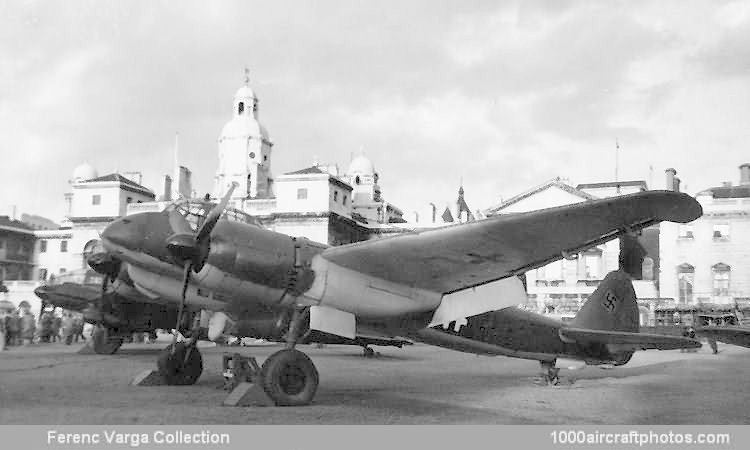04/30/2011. Remarks by Johan Visschedijk: "This was the first night fighting Ju 88 that fell into Allied hands, which landed at RAF Dyce, near Aberdeen, Scotland, on the afternoon of Sunday, May 9, 1943. The aircraft, assigned to 10./NJG 3 and coded D5+EV, was expected as, after making landfall some 15 mls (24 km) north of Aberdeen, it was met by Spitfires which escorted the German fighter into RAF Dyce. It was flown by Oberleutnant (Flying Officer) Heinrich Schmitt.
The flight of the Ju 88 R-1 to RAF Dyce had begun from the airfield at Christiansand, Norway. While still within range of German radio stations, Schmitt announced that he had an engine fire and would have to ditch, and then jettisoned three life rafts. The radio station that received the emergency call marked the spot in Planquadrat (grid area) 88/41 from which the call had been transmitted, and assuming that the aircraft had gone into the sea when no further message was received, activated the search and rescue procedures.
The aircraft was presumed lost, which was precisely what Schmitt and his crew, Oberfeldwebels (Master Sergeants) Paul Rosenberger and Erich Kantwill, had intended. The aircraft then flew directly to the Scottish coastline, picked up its escort of Spitfires and then flew to RAF Dyce, where, after landing, it was immediately surrounded by military police who had cleared the area of casual observers.
The successful conclusion of the defection was signaled to Schmitt's father via the British secret radio station Gustav Siegfried eins (one), the code phrase being 'der Mai ist gekommen' (May has come). The Luftwaffe was to learn of the desertion in the following month when both Schmitt and Rosenberger broadcast over the British radio.
The defected Ju 88 R-1, fitted with the FuG 202 Lichtenstein BC radar, was reserialed PJ876 and used extensively for radio and radar investigation flights from Farnborough and Hartford Bridge, and its radar was adjudged to compare favorably with the British AI Mk IV, the German aerial array producing a narrower beam which enabled small target movements to be followed with greater ease.
After removal of the Lichtenstein BC radar array from the nose, the aircraft was subsequently shown as war trophy on several occasions, later it received the RAF Maintenance Command serial 8475M and was stored for preservation. In 1975 it was restored at RAF ST. Athan for static display at that station, while presently it is on display at the RAF Museum at Hendon.
